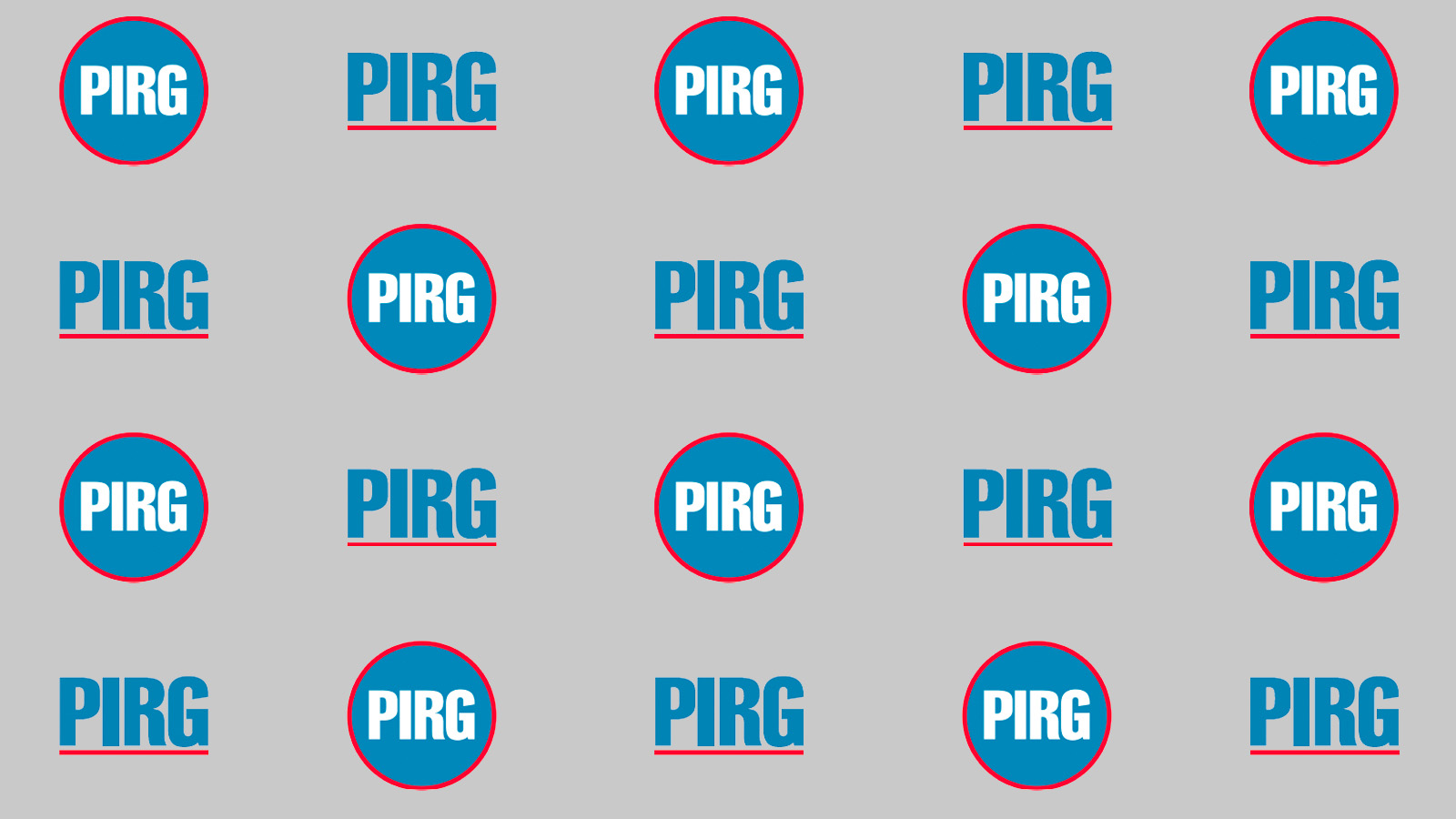
Investigation of Barriers to Appliance Service Information Access
As the FTC considers requiring manufacturers to provide access to repair materials, investigation highlights barriers which thwart appliance repair and drive up costs
An investigation finding that the vast majority of appliance manufacturers (86%) do not share repair manuals with users.
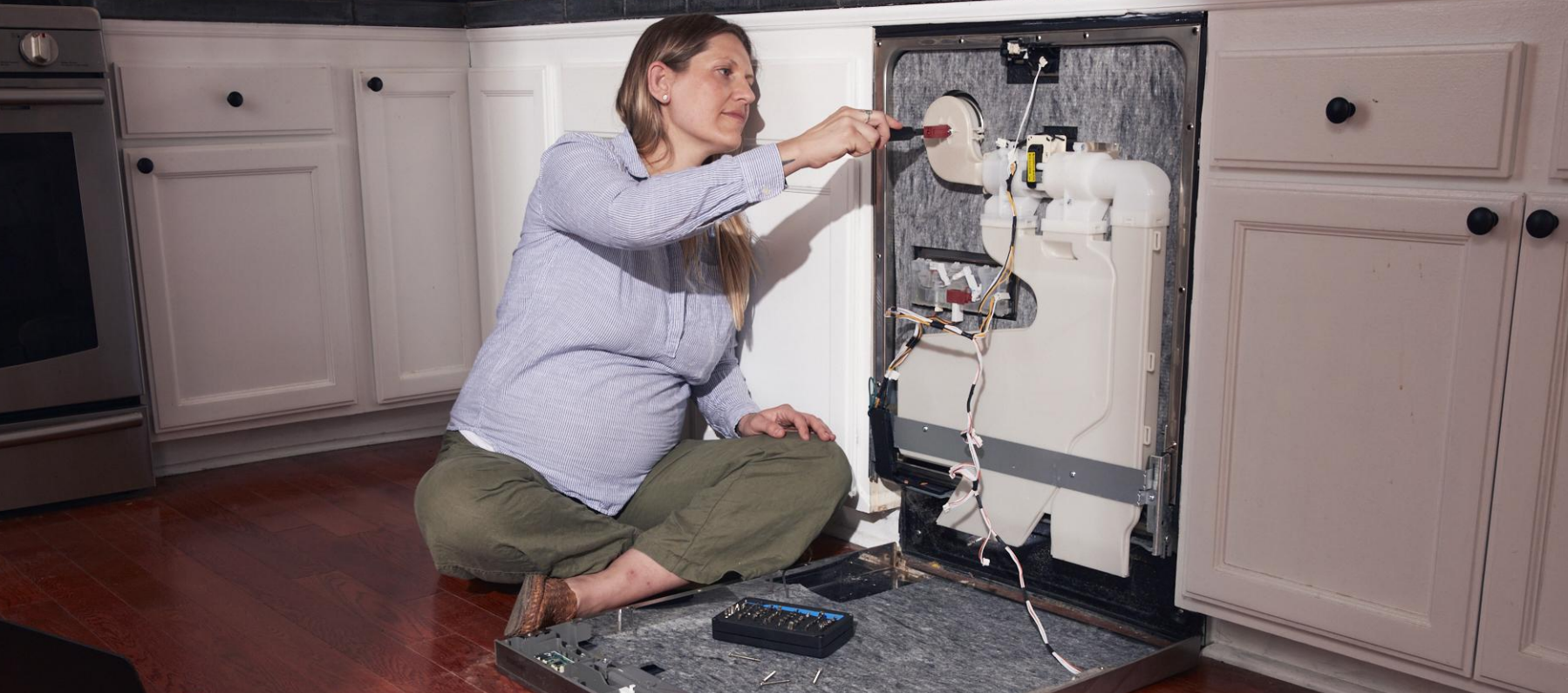
Executive Summary
We investigated the availability of appliance repair information in the United States, by two primary methods: We surveyed and interviewed appliance repair professionals, and we attempted to acquire service manuals from 50 appliance manufacturers. We found that appliance repair in the United States suffers from a lack of access to the information necessary to complete repairs.
Of the 50 appliance manufacturers we examined, just 7 made service manuals available: Two were found posted publicly, and another five were provided to us upon request. In other words, 86% of the companies we surveyed did not provide full repair instructions.
Even for appliance repair professionals, accessing necessary information can be difficult. 89.1% of technicians reported having trouble accessing service manuals. Even more (93.5%) reported difficulty finding necessary schematics. When technicians do find manuals and schematics, they often have to use informal sources. Such manuals may not be current which increases the difficulty of making efficient and timely repairs.
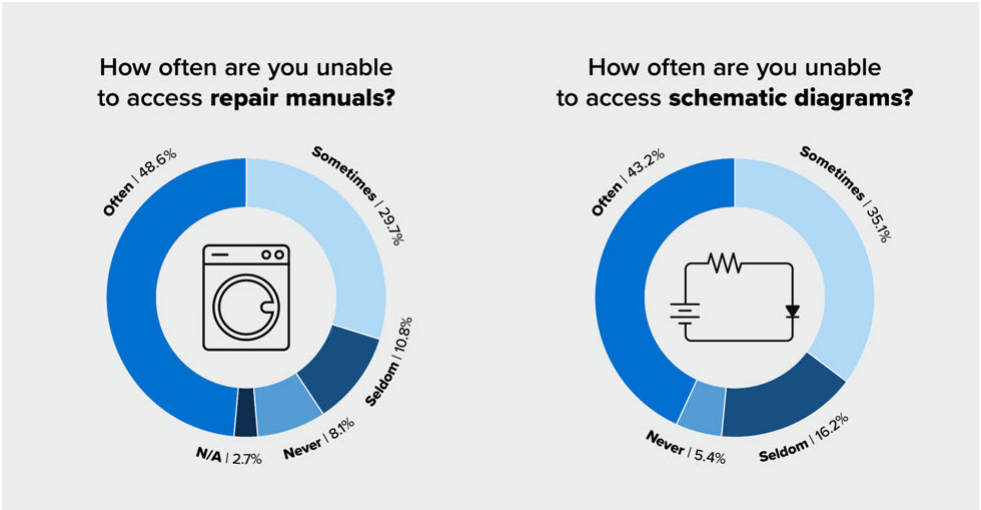
Photo by iFixit | CC-BY-4.0
Technicians rely on these backchannel services because manufacturers often refuse to make repair information available. Some information is available to in-network or authorized servicers exclusively; other information is only available via software that is prohibitively expensive for small shops. Many appliance companies charge hundreds of dollars annually for access to diagnostics and service information that they give to their in-network or official servicers for free; 30% of shops are paying more than $1000/year for access to manufacturer software, but this may only grant them access to one or two subscriptions. GE, for example, charges $919/year. This access is obviously out of reach for an individual consumer repairing a single appliance in their home. It is also, however, out of reach for many servicers that are small businesses and that perform repairs on many different appliance brands. One group of repair technicians services 143 brands; individual subscriptions to all the manufacturers’ own service networks would be prohibitively expensive. Ultimately, consumers bear the burden of these expenses and limitations, subject to increased risk, cost, and downtime of their broken devices.
Failing to subscribe to these services may mean that technicians miss out on crucial information, such as service bulletins that inform them about counterintuitive fault codes or recalls for entire runs of parts. Missing this information often leads to a failed repair for something that is fixable.
Even when technicians do subscribe to these services, however, they frequently find that their service manuals are less comprehensive than would be ideal. Manuals may not have lists of parts, or parts may be absent from diagrams. They may not have schematics or wiring diagrams. They may be missing pinout information or other important details for performing component-level repairs, not just swapping large expensive parts.
Consumers ultimately bear the financial burden of these anti-competitive repair information restrictions. When repairs are more expensive, consumers may choose to replace their appliances prematurely. This choice has an associated environmental burden; appliance repair is nearly always environmentally preferable over replacement. Many commonly replaced components account for less than 3% of an appliance’s overall environmental impact.
Manufacturers’ counter-arguments are generally unsound. For instance, they tend to raise unfounded concerns about safety, despite the fact that the majority of appliance repair is already performed by consumers or independent shops, without major incident. Professional appliance repair is safer than the average job, nationally.
We call on the FTC’s Energy Guide repair information requirement to include circuit schematics, wiring diagrams, pinouts, and part diagrams; diagnostic and calibration software; service bulletins; and computer-aided design files at the end of the appliance’s expected service life. To enable the widest potential for repair and give consumers the opportunity to consult repair documentation at the point of sale, we propose that this information be made available at no charge to the consumer.
The FTC would do well to include access to repair information directly on the Energy Guide label, through QR codes, URLs, or both. Wider public access to appliance repair information would boost the feasibility of do-it-yourself repair, increase competition in the repair market, and ultimately benefit both the environment and consumers’ wallets.
Summary of key findings include:
1. Repairing Instead of Replacing Appliances Results in Significant Energy Savings
- Before appliances arrive on the showroom floor, they have already consumed a significant chunk of the energy they will ever use—and contributed as much as 50% of their lifetime greenhouse gas emissions.
- Replacing individual components in an appliance is far more energy efficient than replacing the entire unit. Many commonly replaced components account for less than 3% of an appliance’s overall environmental impact.
- As the world moves toward renewable energy sources, device-level efficiency matters less. With fully renewable energy, dishwashers would need to last 34 years for replacement to offset the costs of their manufacturing energy.
2. Appliance Repair Saves Consumers Money
- Consumer Reports found that it often makes financial sense to repair even 10-year-old refrigerators.
- Still, rising costs are making repair less appealing. 50% of consumers who replaced rather than repaired their broken appliance chose to do so because repair was too expensive.
- People who choose to repair appliances select do-it-yourself repair and other less-expensive repair options more often than manufacturer repair. 69.3% of appliance repairs are performed by someone other than the manufacturer or a manufacturer’s authorized repair center.
3. Appliance Repair Requires Information That Is Often Unavailable
- 89.1% of appliance repair professionals are at least occasionally unable to access repair manuals for appliances and even more (93.5%) struggle to find schematics.
- Customers have even more trouble accessing repair information. Only 14% of the companies we surveyed made repair documentation available on their website or by asking customer service.
- A study of 150 appliance user manuals found that they do not provide the information necessary for diagnosis. Consumers need full service manuals.
- Over half of the technicians we surveyed were worried that systems that favor manufacturers’ authorized repair centers might put them out of business.
Additionally, the investigation examines what kinds of documentation should be included in addition to the service manual, why the arguments against repair access do not hold water, and how such repair labels could be constructed.
Topics
Authors
Nathan Proctor
Senior Director, Campaign for the Right to Repair, PIRG
Nathan leads U.S. PIRG’s Right to Repair campaign, working to pass legislation that will prevent companies from blocking consumers’ ability to fix their own electronics. Nathan lives in Arlington, Massachusetts, with his wife and two children.
Dr. Elizabeth Chamberlain
Director of Sustainability, iFixit
Dr. Beatriz Pozo Arcos
Repair Solutions Consultant, iFixit
Find Out More
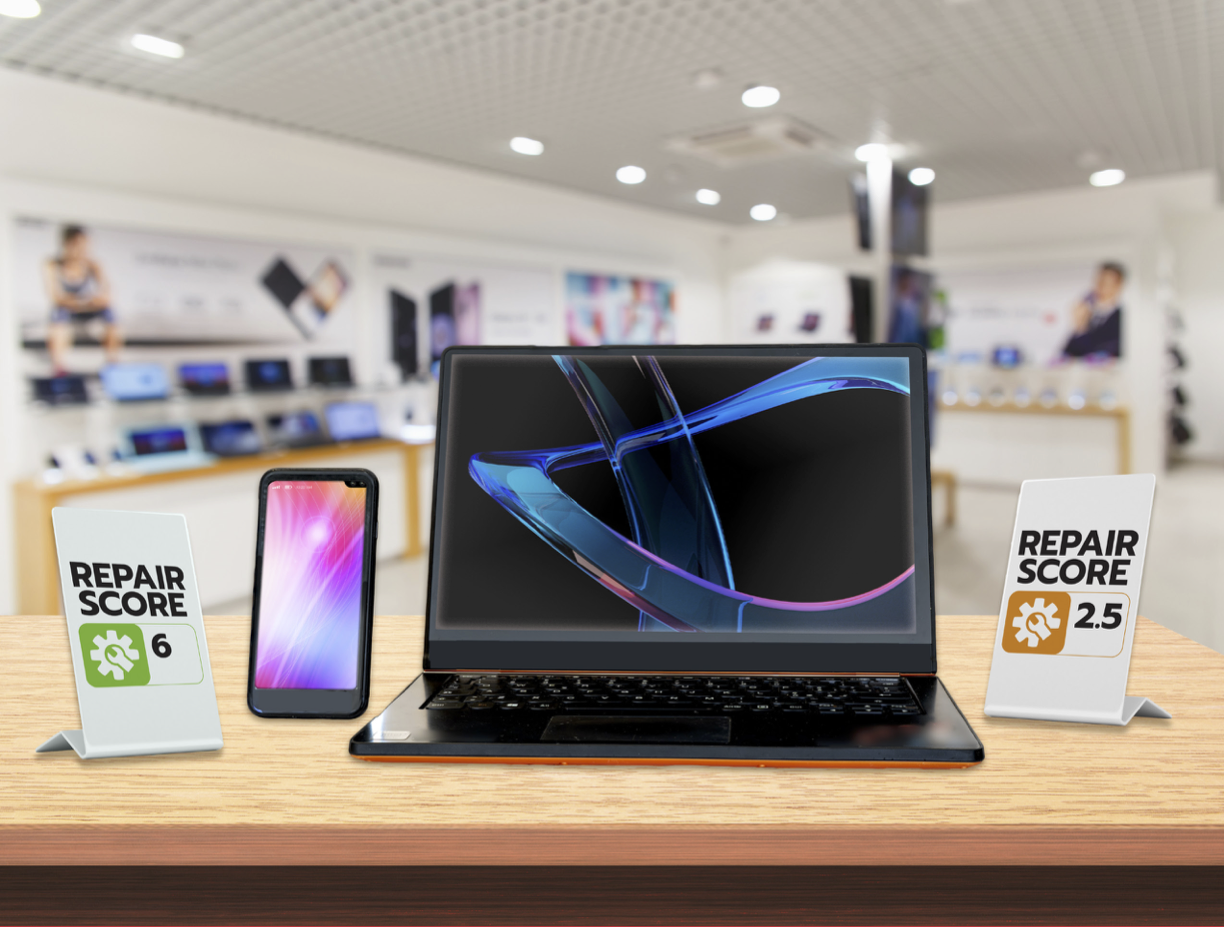
‘Failing the Fix’ scorecard grades Apple, Samsung, Google, others on how fixable their devices are

I testified to Maine legislators in support of repair scores – LD 1716
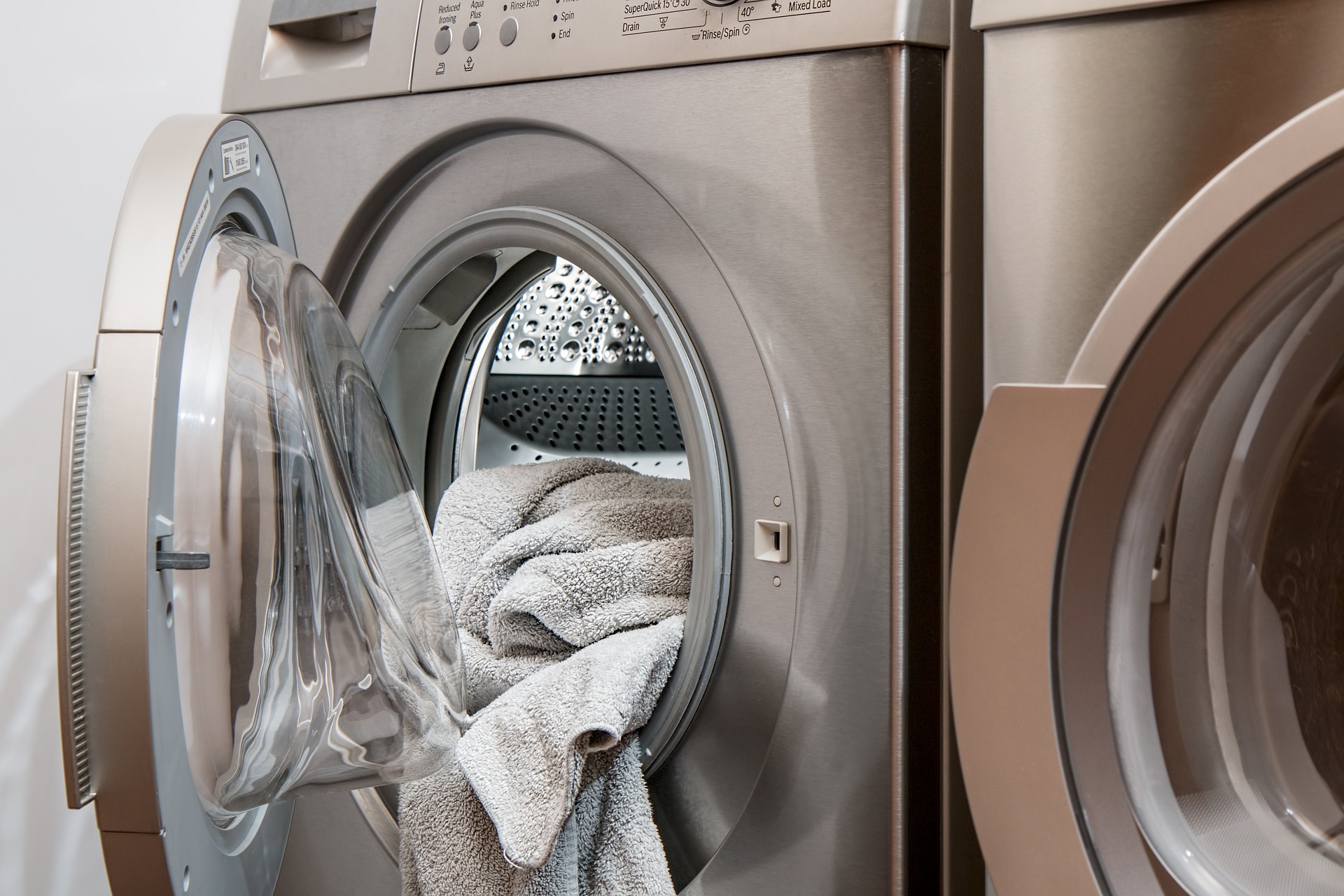
“Smart” Washing Machines are Dumb
